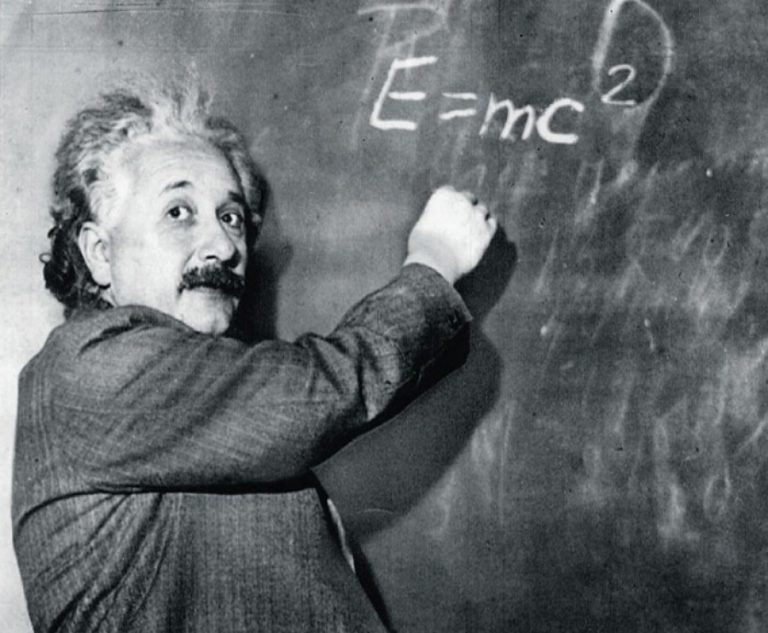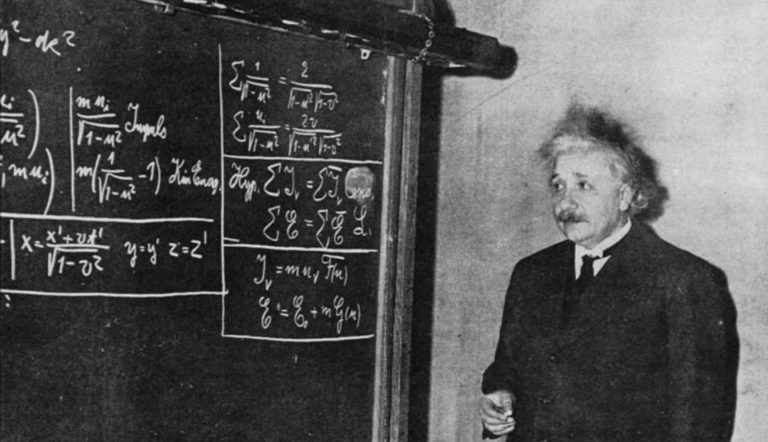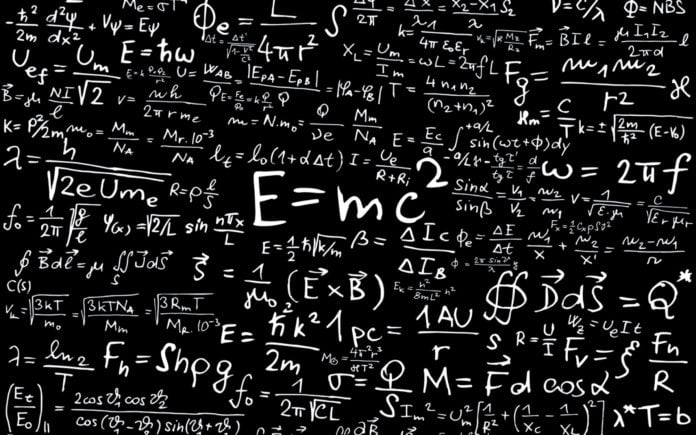Einstein’s great asset was his imagination, which was characterized by childish fantasy, unrestricted by the patterns imposed by realistic maturity.
Constant speed of light
It is possible that the first inspiration for the scientist was the train going to the station in Zurich, where Albert Einstein then lived and worked. As we slowly move from the station, looking out the window, we see the platform leaving. An adult will immediately understand that it is not a platform that is moving, but a train. However, Einstein asked himself: how do we know this?
The answer is Earth. This is what we consider to be stationary, and therefore we attribute speed to objects with respect to it. But what if the Earth didn’t exist? How do we know if our spacecraft is moving or the space station is moving away from us? The first thing that comes to mind is the laws of physics. Perhaps there are some rules that take into account speed, and in this way we learn from the course of phenomena whether we are standing or moving?
The best candidate is magnetic and electric fields. In school, we learned that it really is one force – electromagnetism. The work of Dutch physicist Hendrik Lorenz shows that light, which is actually an alternating electromagnetic field, must always move at the same speed, regardless of our movement.
How to check? Since we know that the Earth moves (quite quickly) around the Sun and around its axis, then if the speed of light depends on the movement, a beam of light moving from west to east – and therefore in the direction of the Earth’s movement – should follow the same way, different from the second, from north to south. Such an experiment was conducted by American scientists Albert A. Michelson and Edward Morley. And it turned out that the speed of light really does not depend on the direction of its movement.
Special Relativity
Motion exists only in the context of two observers comparing their systems, it is always mutual, and there is no point in defining systems at rest. Therefore, all correct physical theories must be independent of velocity and position, and also of time. If it were otherwise, it would be possible to distinguish between mobile and stationary systems.
How to come to terms with this constant speed of light? After all, this means that if the space “beacon” sent a light signal, and we hit a rocket flying at a speed close to the speed of light, and chased this signal, it would just as quickly move away from us and the lighthouse. This is paradoxical, but not a child’s imagination.

If so, then either the distance between us and the beam increases, or time slows down for us. The degree of space stretching or time dilation is proportional to the relative speed. In the case of the pursuit of light, space will stretch indefinitely, and time will stop.
We reach a point where our imagination may not be enough for us. What does it mean that time will stop? Will we freeze in one position? Well, no, we will live normally in our frame of reference – but we will feel like gods existing outside the time of the rest of the universe. But since motion is relative and mutual, we can say the same about the world outside of us. So what is simultaneity? How do you reconcile the principle of cause and effect with this?
All the implications of the theory of relativity are not yet understood. Einstein named two of the most important. First, it is impossible to reach the speed of light. The energy required to increase speed increases inversely with the difference between it and the speed of light. An object moving at the speed of light will have infinite energy. But since motion is relative, what is this energy? As we remember from school, the energy of motion is proportional to speed and mass. So, Einstein said that it should be massive. From this he derived his most famous equation. E=mc^2 – mass is a form of energy at rest.
The second conclusion from the constancy of the speed of light is the need to integrate time as the fourth dimension into the three-dimensional space known to us, already described in antiquity by Euclid. Only space-time created in this way, first defined by the German mathematician Hermann Minkowski, will correctly describe physics. A point in spacetime is a specific location in space at a specific point in time. The segment of space-time connecting two of its points is the distance between two events.
General Relativity
Mass is not only a measure of the force that must be applied to set an object in motion, and therefore its degree of inertia. Mass is also the source of gravity. These definitions refer to completely different phenomena. Can they contain the same physical quantity? Such “incidents” do not happen in nature.
The corresponding experiment was carried out by the Hungarian geophysicist Lorand Eötvös using a torsion pendulum. It turned out that the inertial and gravitational masses are absolutely equal. For Einstein, this was proof that, like the electric and magnetic fields, gravity and inertia must follow the same pattern. Under the influence of a force, we change the value or direction of our speed, which in physics is called acceleration. Acceleration is a change in speed, and speed is always relative. Since motion itself is relative, acceleration must also be relative.

Inspired by the example of the Earth, the curved surface on which we live and measure, Einstein knew that a flat surface was not the only possibility allowed by geometry. If the four-dimensional space-time were not a plane, then the trajectories of objects devoid of any external interference and, therefore, moving in straight lines according to the classical laws of physics, would have to be curved.
In some systems, this could be explained by gravity, in others – by inertia, and in the model – simply by the curvature of space. Two trains traveling on adjacent parallel tracks, or on the same track but at a constant interval, may collide.
It was necessary to rethink the concepts of parallelism and direct, as well as the concept of time. Since space is curved, light must also be curved in such curves. Since curvature must cause effects such as gravity, each mass must create space-time inhomogeneities and thus, for example, influence the passage of time.
Many of these conclusions have been experimentally confirmed, such as the uneven flow of time at the closest and farthest point of Mercury’s orbit, leading to its slow changes, or the ability to see stars hidden behind other massive cosmic bodies. Many others are still awaiting confirmation.















